
Fragrance notes are the cornerstone of perfumery, a delicate art form that combines various scents to create a unique olfactory experience. These notes are much like the musical notes in a symphony, each playing a crucial role in the composition’s overall harmony and impact.
At the heart of every fragrance lies a meticulously crafted blend of top, heart, and base notes, unfolding over time to reveal their complexity and depth on the wearer’s skin.
Fragrance Notes: Top, Heart & Base

Fragrance notes are the building blocks of a perfume, creating a multi-layered scent that evolves. These notes are categorized into three main types: top, heart, and base, each playing a distinct role in the overall aroma and how the men’s cologne unfolds on the skin.
Top Notes: These are the first scents you smell upon applying a fragrance. They are usually light, fresh, and refreshing, designed to make an immediate impression.
Typical top notes include citrus fruits like bergamot, orange, and lemon and aromatic herbs such as basil and lavender. They are fleeting, evaporating quickly to reveal the heart notes.
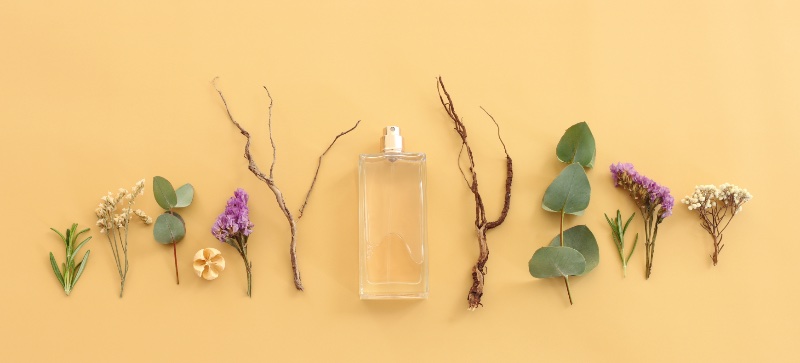
Heart Notes: Also known as middle notes, these form the fragrance’s core. They emerge as the top notes fade, bringing a deeper, more rounded aroma.
Popular heart notes include floral and fruit scents like jasmine, rose, and peach. They create a soft, harmonious transition to the base notes. Heart notes represent the essence of the fragrance, lasting longer than top notes but not as long as base notes.
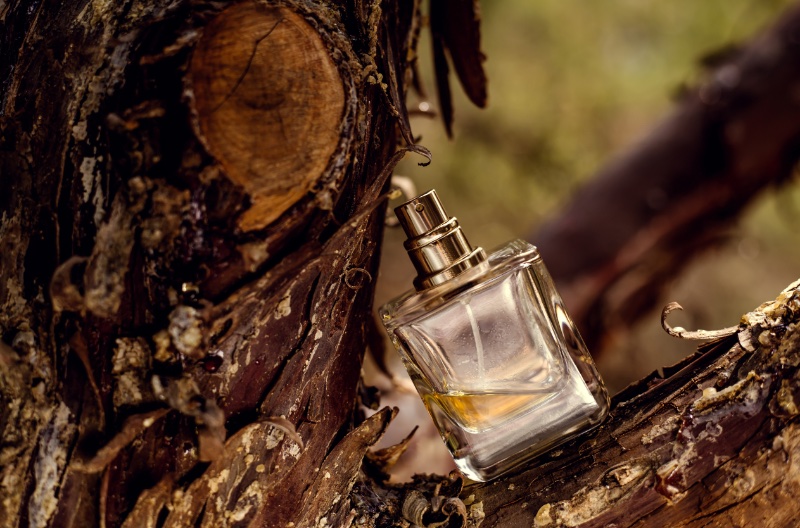
Base Notes: The foundation of any fragrance, base notes give the perfume its lasting power. These rich, deep scents unfold slowly, providing depth and longevity to the fragrance.
Standard base notes include musk, amber, sandalwood, and vanilla. They anchor the fragrance, ensuring its aroma lingers on the skin for hours. The scent evolves with body chemistry to create a unique blend.
Harmonious Notes: The interaction between top, heart, and base notes gives a perfume its complexity and character. As these notes blend and mature on the skin, they offer a personal experience, gradually revealing the depth and nuances of the fragrance.
The Palette of Scents
Floral & Citrus Notes
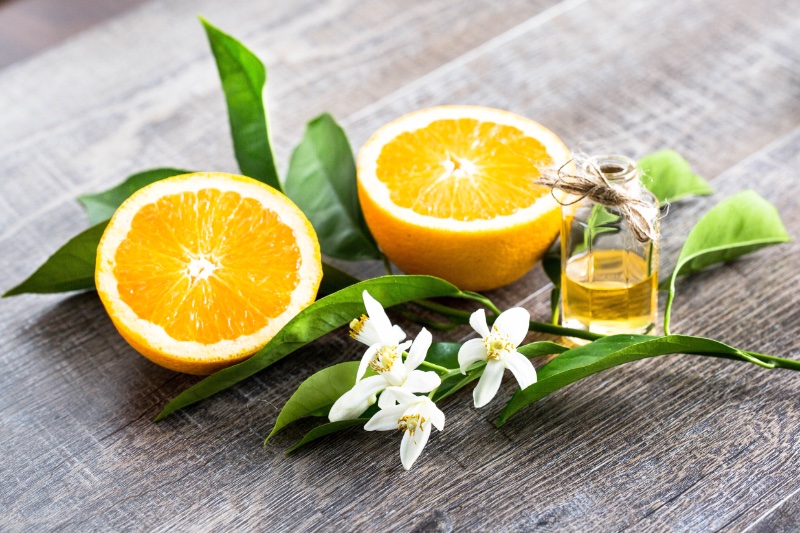
Floral and citrus notes are pivotal in crafting men’s fragrances that balance sophistication with vitality. Citrus notes, such as bergamot orange, grapefruit, and lemon, stand at the forefront, offering freshness and invigorating the senses.
These notes are celebrated for their crisp, clean aroma, embodying the essence of energy and youth. Bergamot, in particular, adds a unique, slightly spicy twist, making it a staple in many men’s colognes for imparting an elegantly fresh sophistication.
Though less expected in men’s perfumery, floral notes are skillfully integrated to add depth and complexity. Though traditionally associated with femininity, jasmine, rose, and lavender are utilized more subduedly, lending a subtle floral undertone that enhances the fragrance’s overall character without overwhelming it.
These notes bring a touch of refinement and warmth, creating a seamless bridge to the more robust heart and base notes.
Exotic & Woody Notes
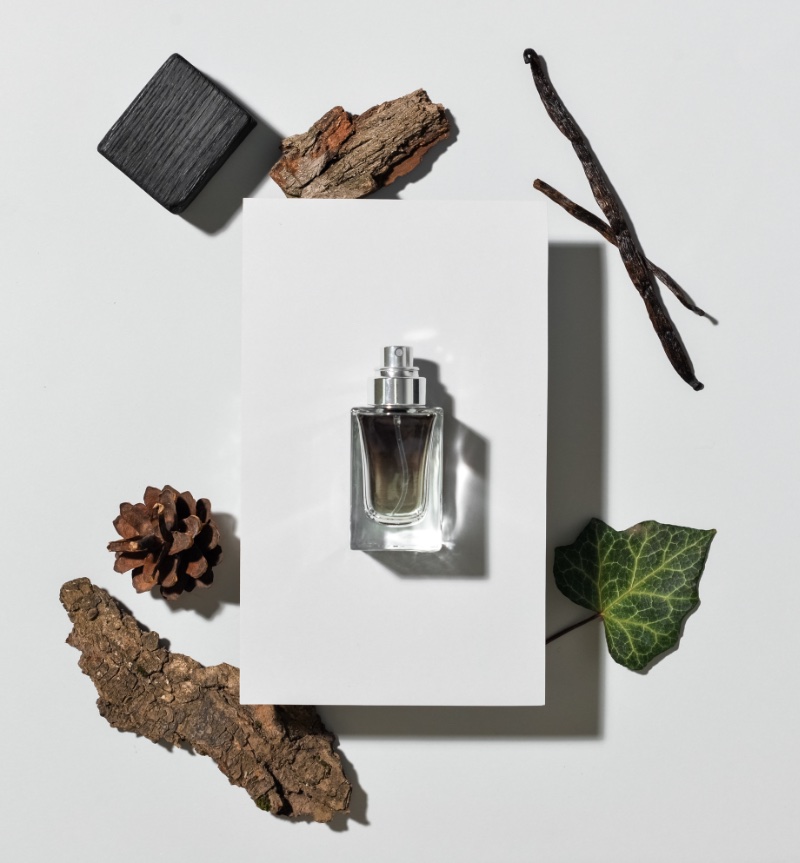
Exotic and woody notes provide a foundation for strength, adventure, and sophistication. These scents are drawn from the far corners of the world, bringing together a palette of aromas that is as diverse as it is captivating.
Exotic notes such as cananga odorata (ylang-ylang), lychee, and mango offer a departure from the traditional, introducing rich, intriguing, and often unexpected scents in men’s perfumery. Cananga odorata, with its slightly fruity and floral aroma, adds a layer of complexity, suggesting a sense of mystery and allure.
Though not commonly used, lychee and mango can inject a sweet, tropical freshness that sets a fragrance apart.
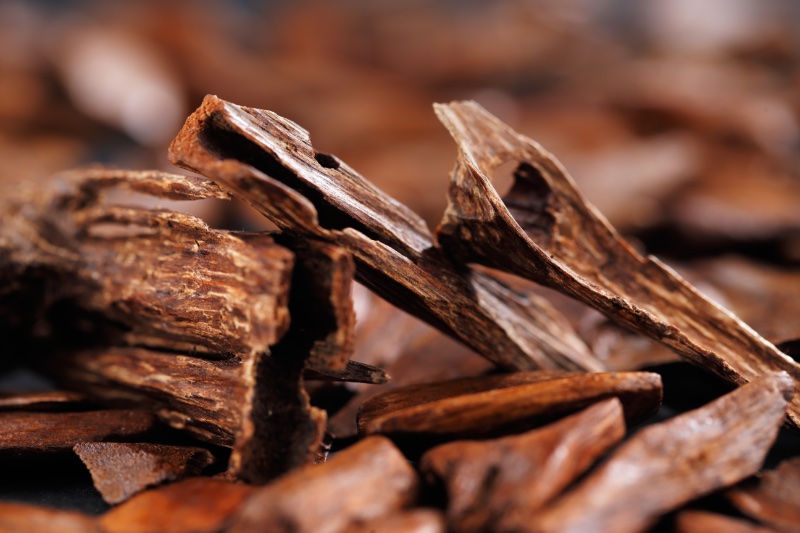
On the other hand, woody notes are the backbone of many classic and modern men’s fragrances. Sandalwood, cedar, and amber are favored for their warm, earthy qualities, grounding the fragrance with a sense of enduring strength and reliability.
Sandalwood, known for its creamy richness, adds a luxurious depth, while cedar introduces a clean, sharp woodiness that evokes the great outdoors. Amber rounds out the trio with its resinous, slightly sweet warmth, providing a lingering base that complements the lighter top and heart notes.
Together, exotic and woody notes contrast men’s fragrances, blending the adventurous spirit of exotic aromas with the steadfast character of woody scents.
Spicy & Gourmand Notes

Spicy and gourmand notes introduce an element of warmth and indulgence, crafting inviting and sophisticated scents. These notes add a layer of complexity and richness.
Spicy notes like black pepper, cardamom, and nutmeg provide a vibrant kick to fragrances, infusing them with energy and warmth. With its sharp, mildly fiery aroma, black pepper adds an immediate lift to the scent profile, making it more dynamic and compelling.
Cardamom brings a sweet, spicy, exotic, and comforting warmth, while nutmeg offers a subtle, woody spice that deepens the fragrance’s complexity.
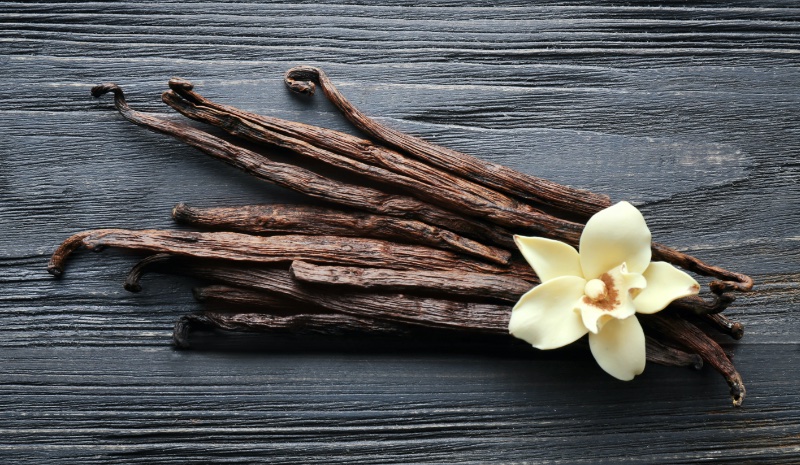
Gourmand notes, on the other hand, borrow from the culinary world to add a touch of sweetness and richness. Vanilla, caramel, and cappuccino are popular choices, lending a creamy, indulgent quality that is deeply satisfying.
With its warm, sweet aroma, vanilla adds a comforting, almost nostalgic layer, while caramel brings a more decadent, buttery sweetness. Cappuccino, a less common but intriguing choice, introduces a roasted, slightly bitter edge that complements the sweetness, evoking the ambiance of a cozy café.
Combining spicy and gourmand notes creates an energizing and comforting fragrance.
The Art of Crafting Fragrances

Creating a men’s fragrance is a meticulous blend of art and science, requiring a deep understanding of scent interaction and skin chemistry.
Selecting Fragrance Notes
Selecting the right combination of notes is crucial in defining a fragrance’s character. Essential oils and fragrance oils are the primary sources of these notes.
Essential oils, derived from natural elements like flowers, herbs, and spices, bring authenticity and depth, directly connecting to nature. In contrast, fragrance oils, which can be synthetic or naturally derived, ensure consistency and longevity.
The decision to use synthetic musk or natural extracts impacts the scent profile and ethical and environmental considerations.
The Role of Distillation & Temperature

Distillation is a crucial technique for extracting pure essences from raw materials. The process requires precise temperature control to preserve the integrity of the volatile compounds.
This method ensures that the essence captured retains its full aromatic profile, which is crucial for building the fragrance’s foundational notes.
Balancing Act: Mixture & Harmony
The art of fragrance crafting lies in the perfumer’s ability to balance the volatile top notes with the more stable heart and base notes. This delicate equilibrium creates a scent that evolves, revealing different facets of its personality as it interacts with the wearer’s skin.
Crafting an Experience

Fragrances are more than just a pleasant aroma; they’re a personal expression. The effort to select the right blend of scents—from sharp citrus and soft florals to earthy woods—underscores the dedication to creating an experience that seamlessly fits into your daily routine.
Navigating the world of fragrances involves understanding the subtle differences between types of colognes, such as eau de toilette and eau de cologne. These distinctions, based on the strength and longevity of the scent, are vital to finding a fragrance that complements your lifestyle and preferences.
Choosing a fragrance is about crafting an experience that enriches your daily life. It’s a journey towards finding that ideal scent that resonates with your taste, inviting joy and satisfaction—making each fragrance choice a meaningful part of your story.





